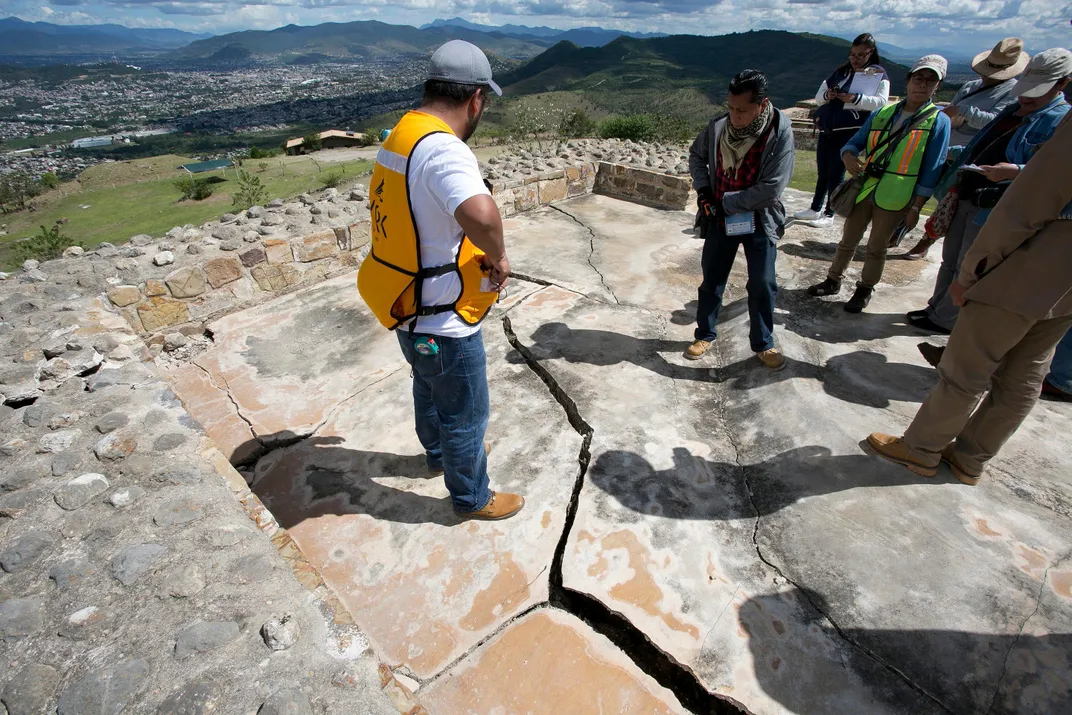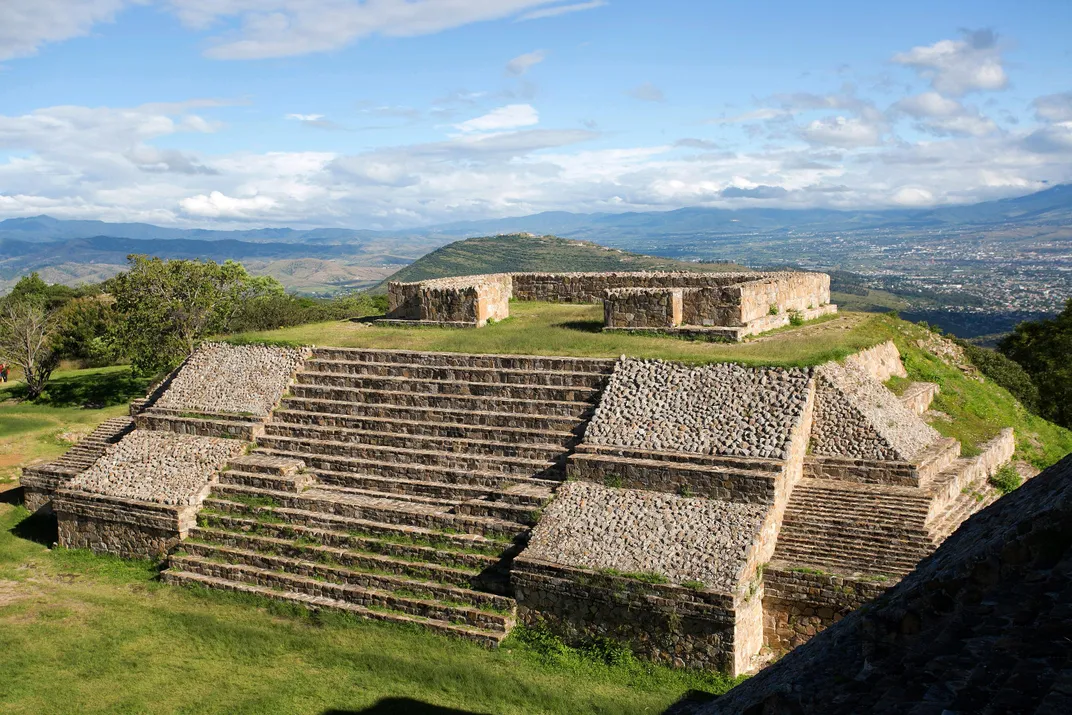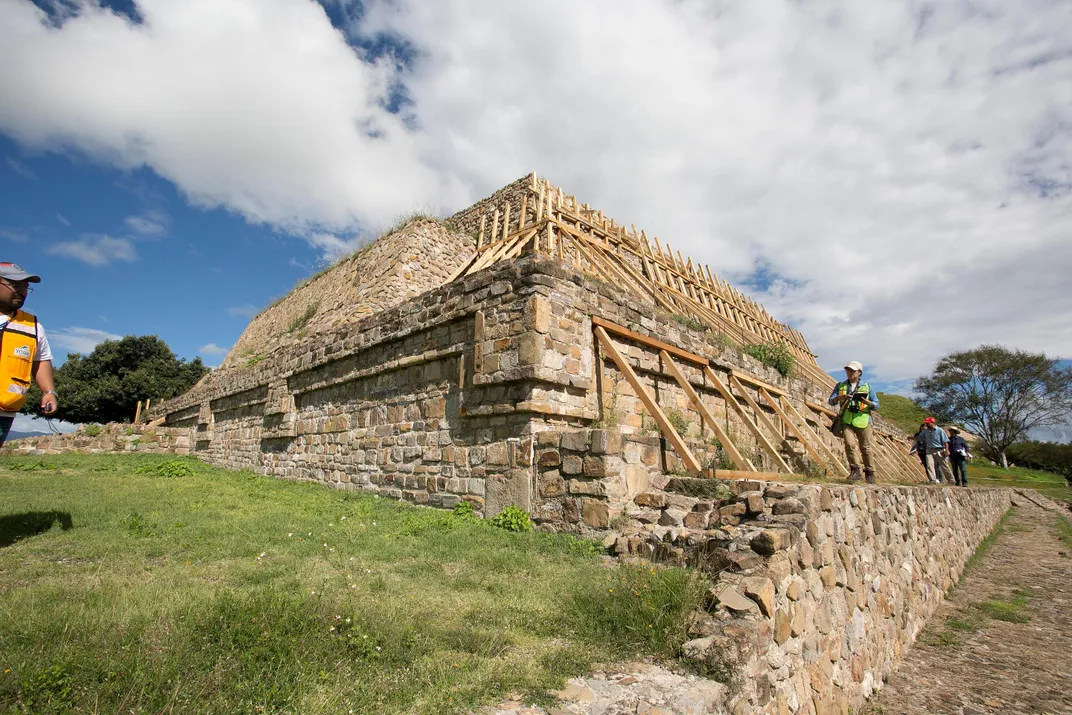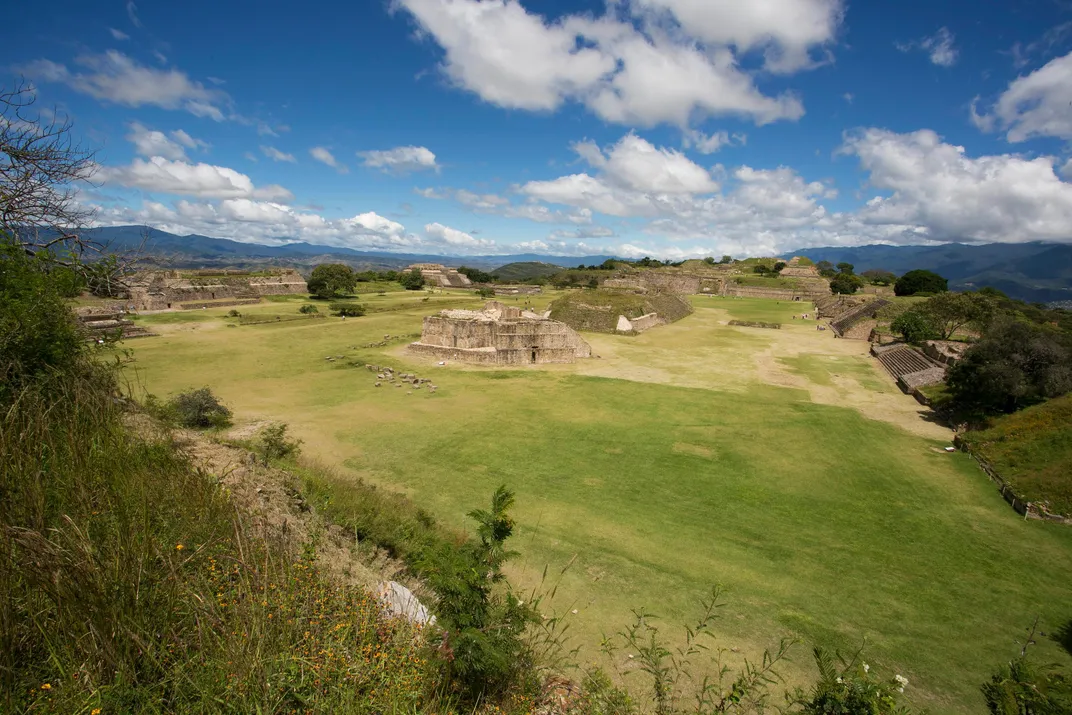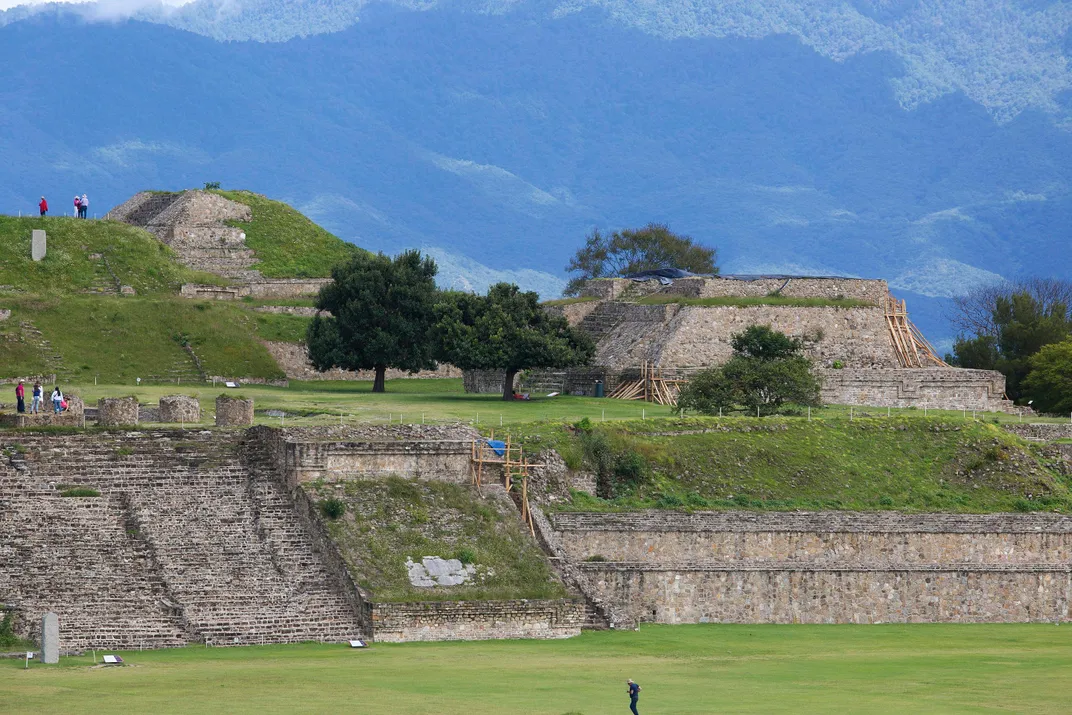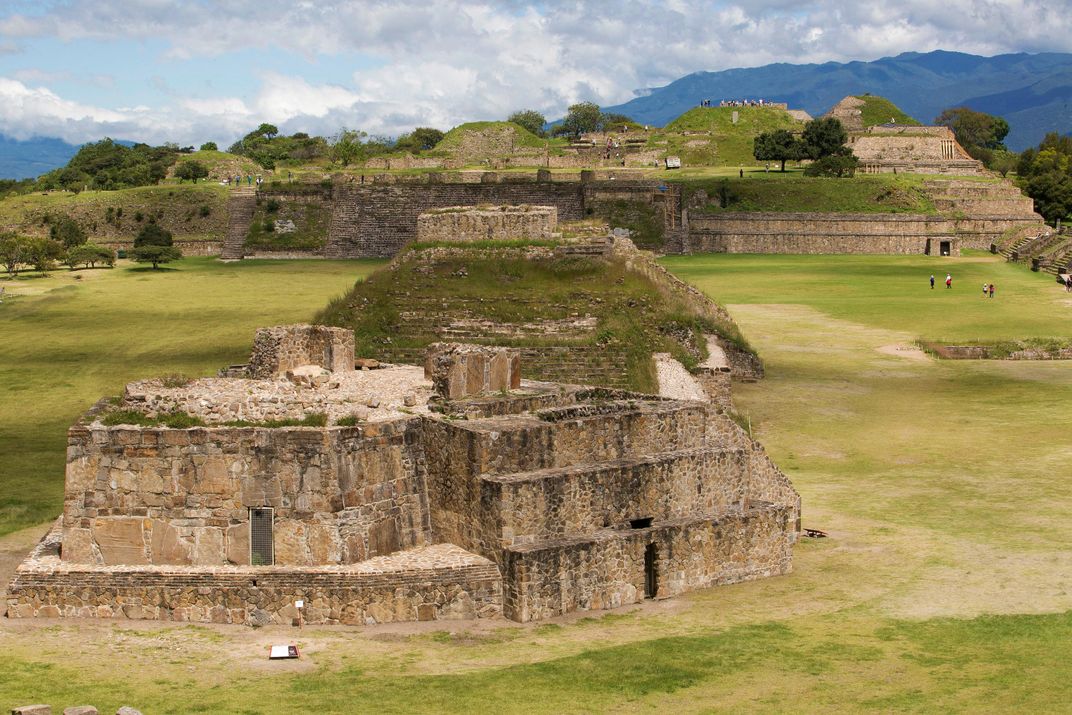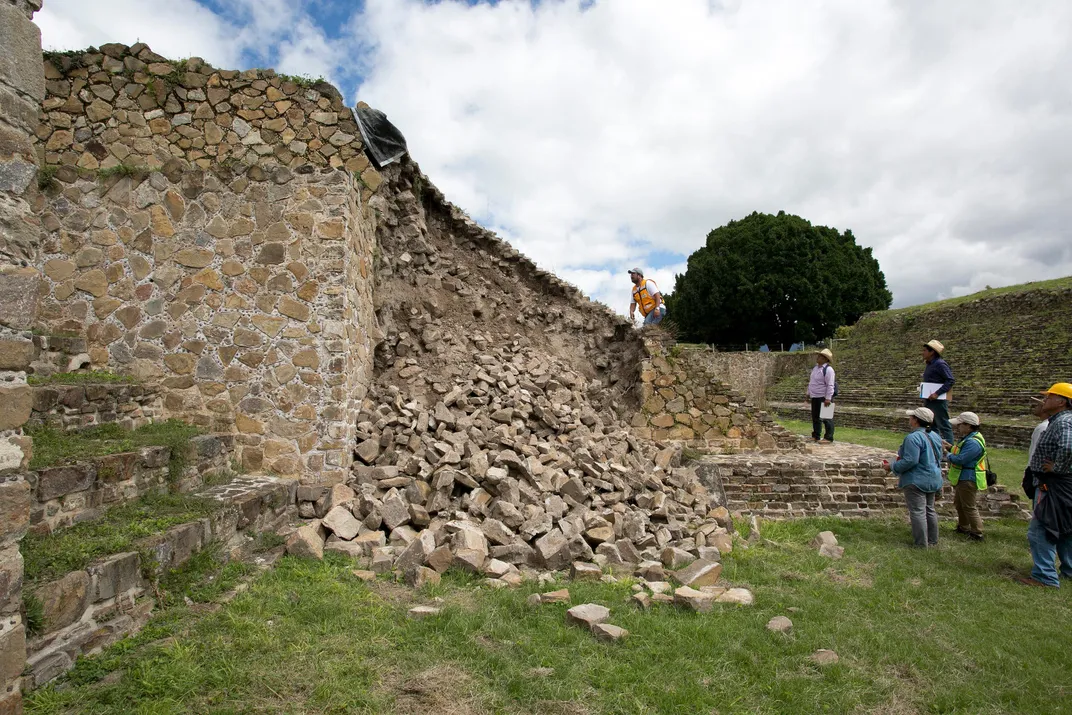Oaxaca’s Pre-Hispanic Monte Albán Ruins to Be Restored
World Monuments Fund raised $1 million to help repair 15 structures at the World Heritage Site that were impacted by a 2017 earthquake
Founded in the 6th century B.C., Monte Albán was once a thriving Mesoamerican metropolis inhabited by the Olmecs, the Zapotec and the Mixtec civilizations.
Today, it’s an Unesco World Heritage site that tells the story of these three pre-Hispanic peoples through its terraces, pyramids, residential structures, ballcourts and canals that extend for miles.
But though Monte Albán functions as an important record of these ancient civilizations, in recent years some of that history has been in danger of disappearing. In 2008, World Monuments Fund called attention to its plight. Significantly, it pointed out that hieroglyphic inscriptions made by the Zapotec were in danger of rapid erosion. “Looting and vandalism also threatened the site’s structural integrity, as did unchecked tourism,” the non-profit added.
Adding to Monte Albán’s problems, in September of 2017 two devastating earthquakes hit the region, one of which severely damaged at least two pyramids in Monte Albán, El Universal’s Ismael García reported at the time.
Now, months after the natural disaster, WMF announced on Wednesday that it raised $1 million to support Monte Albán restoration efforts as well as future disaster response.
According to the WMF website, in fact, 15 structures at Monte Albán suffered severe damage from the 8.2-magnitude earthquake. Five of the structures required emergency structural work to prevent collapse.
The new project will include conservation of physical structures, geological surveys and training for locals on how to prepare for future natural disasters. The work, which will be done in partnership with the National Institute of Anthropology and History, is expected to begin in July and last about two years.
Following the earthquakes last September, WMF began assessing damage at cultural sites around Mexico.
“Of the many sites we assessed, Monte Albán stood out as one of the most vulnerable,” Lisa Ackerman, WMF’s executive vice president, says in a statement to Smithsonian.com. “As a World Heritage Site, it embodies outstanding universal values that demonstrate the high achievements of Zapotec culture. It is also a significant tourism destination that contributes to local economy.”
Ackerman says that because the state experiences frequent earthquakes — another 7.2-magnitude quake hit the state in February — part of the funding will go toward formal geotechnical surveys to help determine the best practices for protecting similar structures in regions with heavy seismic activity in the future.
The idea is to ensure that these heritage sites are safeguarded for generations to come.
“Out of great loss and devastation, we have a chance to restore hope and optimism to the people of Oaxaca and those for whom Monte Albán is a source of great pride,” says Diego Gómez Pickering, the Consul General of Mexico in New York, who was involved with the project. “We are grateful for the support to make it stronger and accessible for future generations.”
